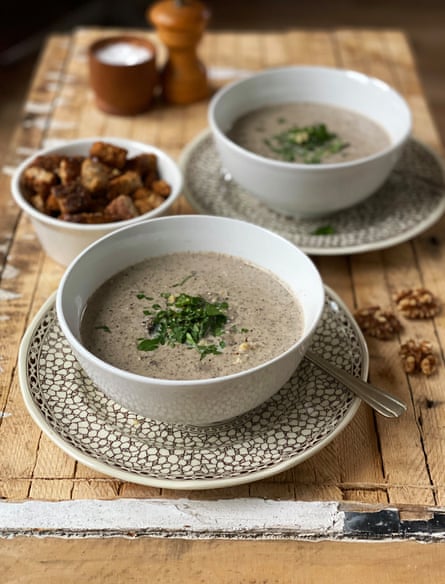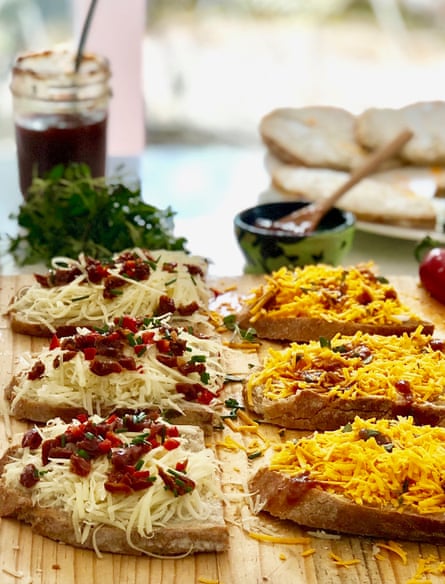We should all be batch cooking. It’s a cheap and environmentally conscious way to feed yourself and, in these days of tightened belts and less frequent supermarket visits, it just seems sensible. However, if you are anything like me, your idea of batch cooking consists exclusively of buying a trolleyful of mince and boring yourself rigid by eating bolognese every day for three months.
Sam Gates wants to change this. Her new book, The Batch Cook Book, works to redefine the basic concept of batch cooking. Although it touches on classics such as curries and lasagnes, it also stretches out to encompass exotic new ideas such as make-ahead pancakes, hummus and shakshuka. Here are her top tips for the batch-cooking beginner.
Don’t worry about being perfectly organised
The thing that has always put me off batch cooking is a basic lack of a) organisational skills and b) Tupperware, but Gates reassures me that I’m fretting unnecessarily. “I try to shy away from saying: ‘You must have this, this and this,’” she says. “It can be quite off-putting if you’re a beginner, or a student. It’s more about using what you’ve got. And yes, obviously if you’re going to cook a massive batch, then you’re going to need a big saucepan and containers. But try to reuse what you have rather than investing in huge amounts of new stuff.”

A big freezer isn’t always necessary
Similarly, Gates says you shouldn’t be put off by a lack of freezer space. “It certainly helps to have a freezer, but again, a lot of recipes are for fridges. You’ll cook them, and then you can eat them again two days later, so it’s a batch in that sense. You can roast a load of chicken thighs, and then strip the meat off half of them and put them in the fridge to use in a stir-fry a few days later. For me, that isn’t a huge investment in time. It’s just a quick batch cook.”
Start with sauces
“The No 1 thing if you’re a beginner is to make sauces,” says Gates. “Start with your basic tomato sauce, because you can use it for anything. This is a bit of a romantic notion, but you can use a basic tomato sauce to travel to any country. You could add certain flavours and make it an Italian pasta sauce. You stick in a bit of harissa and you can make it something that’s a bit more north African. Essentially, it’s a very similar base.” You could even adapt it for use as a pizza topping, or in ratatouille and shakshuka, without much fuss.
Gates’s basic recipe requires 5 tbsp olive oil, heated in a saucepan. Then saute two red onions (finely diced), three large garlic cloves (crushed), one carrot (peeled and finely diced) and two celery sticks (finely diced) for 10-12 minutes until softened. Then, stir in 4 x 400g tins of chopped tomatoes, 1 tbsp tomato puree and 1 tsp caster sugar, and season generously with salt and pepper. Bring to the boil and turn down to a gentle simmer. Partially cover and cook, stirring regularly, for 30 minutes, until the sauce is rich and thick. Taste and add more seasoning if needed. Allow to cool completely before storing in the fridge for up to three days, or in the freezer for up to two months.
Liven up dishes with a batch-cooked flavour-bomb
These are a masterstroke; intensely flavoured mixtures of herbs and spices that are frozen in ice-cube trays. “The idea is that you can take something fairly simple and then literally drop a bomb into it that just transforms it into a whole different ballgame,” says Gates. It’s the batch-cooking equivalent of throwing in some oil and lemon to liven up all manner of dishes.
To make a wild garlic oil flavour-bomb, mix 300ml olive oil with 50g young wild garlic leaves (finely chopped) and season well with salt and pepper. Pour into ice-cube trays, cover with a thin layer of olive oil and freeze. Use them in place of straight olive oil as a base for soups, stews and sauces.
You can freeze cheese
“If you buy grated cheese, which you use in lots of recipes, it’s so much more expensive than buying a big block,” says Gates. “Yes, it’s less convenient, but buy a big block, grate it and stick it in the freezer. It doesn’t really stick together when you freeze it, so you can reach in and take a couple of sneaky handfuls from a box of cheese in the freezer without having to defrost the whole lot. It’s brilliant.”

But not cream
Gates is adamant that while most things freeze surprisingly well, cream is an exception. “I’ve found that, with things like soup, if you put cream in before it goes in the freezer it often curdles,” she says. “I have a mushroom soup recipe and that goes in the freezer without the cream, and then when you take it out, you just add the cream at the last minute.”
Batch-cook toasties
Gates strongly recommends batch-cooking toasted sandwiches; assembled, filled and wrapped in clingfilm ready for a quick blast in the frying pan whenever you’re hungry. “Everyone loves a toastie,” she says. “I make them in batches of four or eight, wrap them, stick them in the freezer and then you just take them out and cook them from frozen. That’s a great one for students because it’s cheap. The recipe in the book has got gruyere and sundried tomatoes and stuff, but there’s also a version with just red leicester and pickles. You can do a fancy version or everyday version. Toasties for me were a revelation for things like quick lunches.”
Freeze before you cook
“I’ve got a ball of cookie dough in the freezer at the moment,” says Gates. “You can make the cookie dough, stick it in the freezer and then if you’ve suddenly got a need for a biscuit or loads of kids who need something sweet to fuel them, you can take it straight out, cook it and it’s done in a matter of minutes.” Gates takes a similar approach to batch-cooking cinnamon buns and apple cake, too.
The Batch Cook Book: Money-saving Meal Prep for Busy Lives by Sam Gates is published by Robinson. To buy for £16.52 (RRP £18.99) go to bookshop.theguardian.com. P&P charges may apply
from Lifestyle | The Guardian https://ift.tt/2Th0QKS
via IFTTT

comment 0 Comment
more_vert